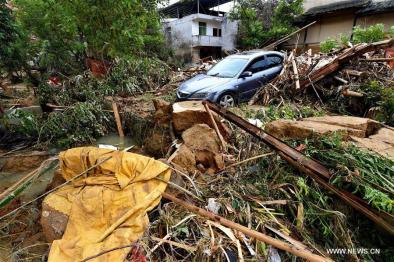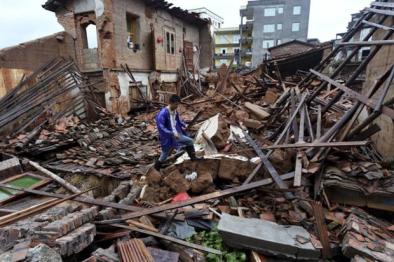Science Source
Human influence on tropical cyclone intensity
- States that recent assessments agree tropical cyclone intensity should increase as the climate warms
- States there is less agreement on the detection of recent historical trends in tropical cyclone intensity
- Interprets future and recent historical trends by using the theory of potential intensity, which predicts the maximum intensity achievable by a tropical cyclone in a given local environment
- Finds that although greenhouse gas–driven warming increases potential intensity, climate model simulations suggest that aerosol cooling has largely canceled that effect over the historical record
- States that large natural variability complicates analysis of trends, as do poleward shifts in the latitude of maximum intensity
- Finds that in the absence of strong reductions in greenhouse gas emissions, future greenhouse gas forcing of potential intensity will increasingly dominate over aerosol forcing, leading to substantially larger increases in tropical cyclone intensities
Related Content
Headline

Jul 15, 2016 | WIRED
Here’s Proof That a Typhoon’s Biggest Peril Is Rain, Not Wind
Headline

Jul 13, 2016 | EurekAlert! / NASA Goddard Space Flight Center
NASA IMERG finds Typhoon Nepartak dropped almost 20 inches of rain
Headline

Jul 13, 2016 | The China Post
Crop losses from Typhoon Nepartak top NT$1 billion
Headline

Jul 12, 2016 | Bangkok Post / Agence France-Presse
Nepartak: Final update (Monday, July 11, 2016)


